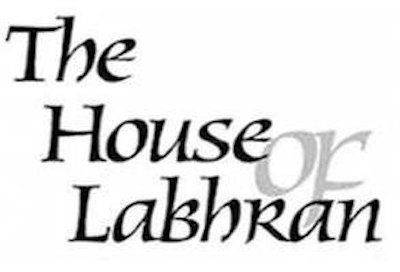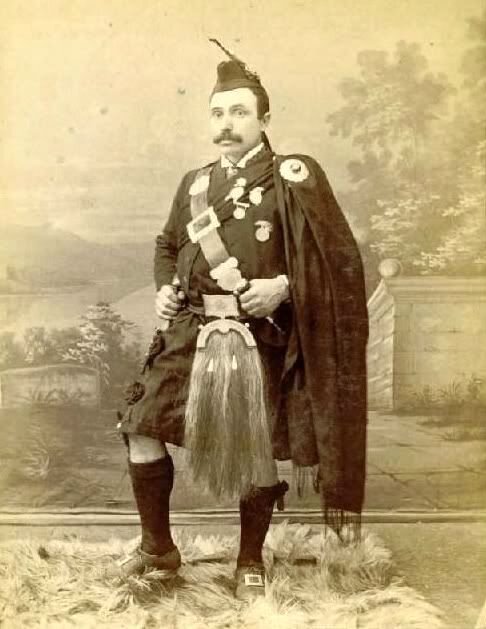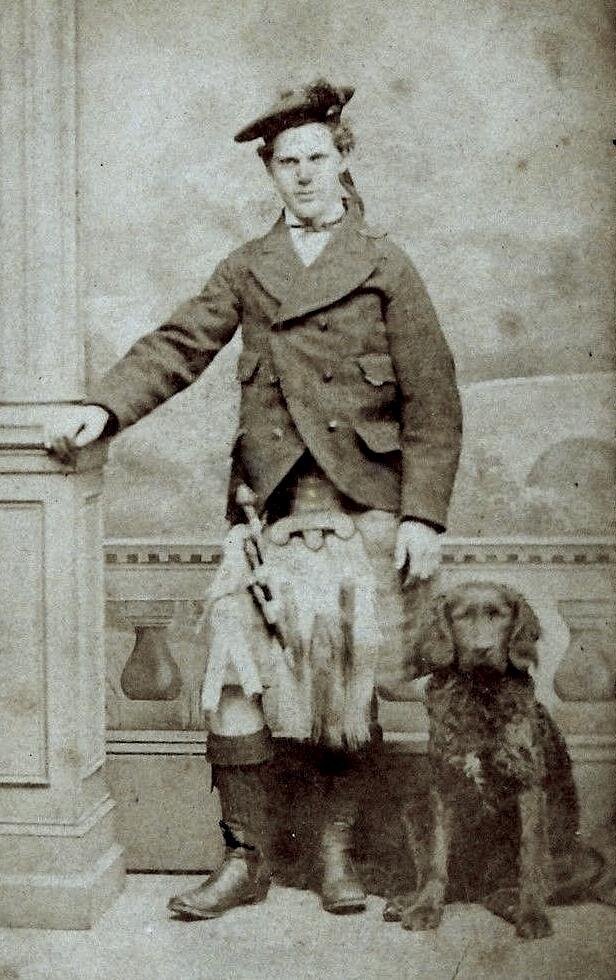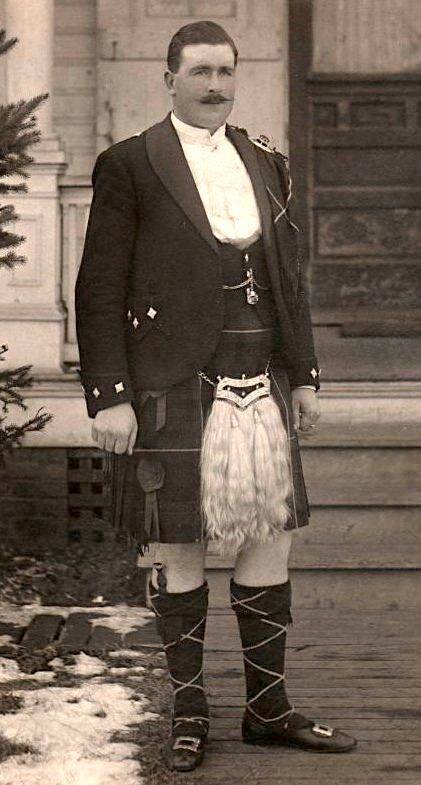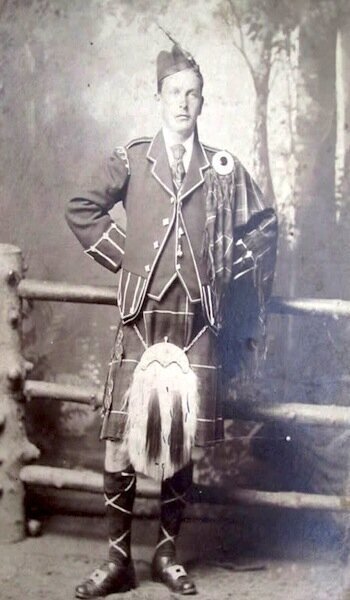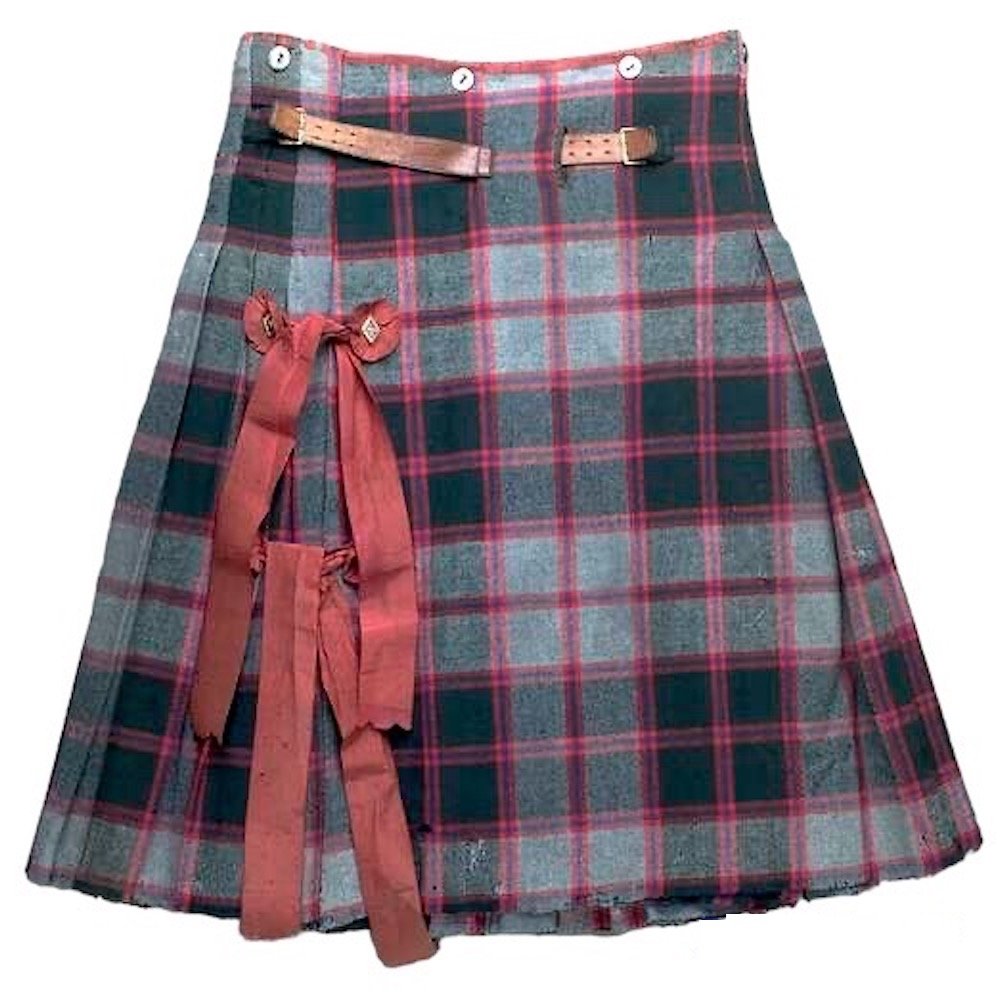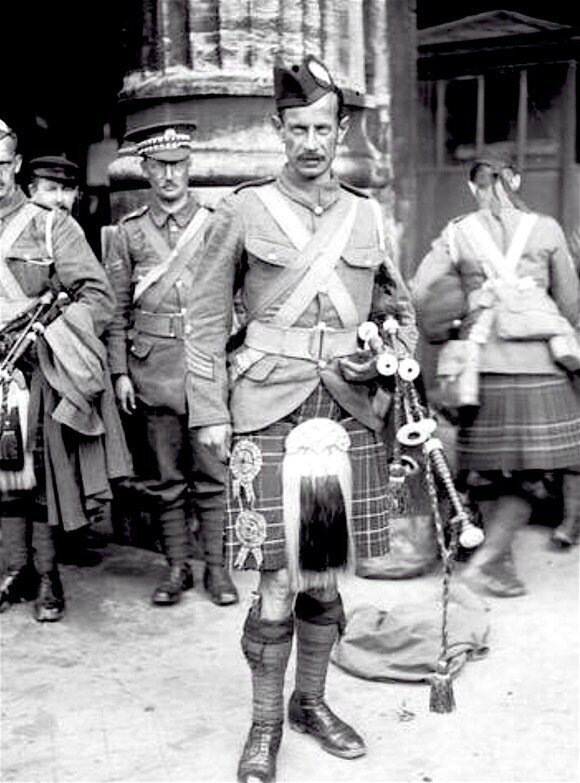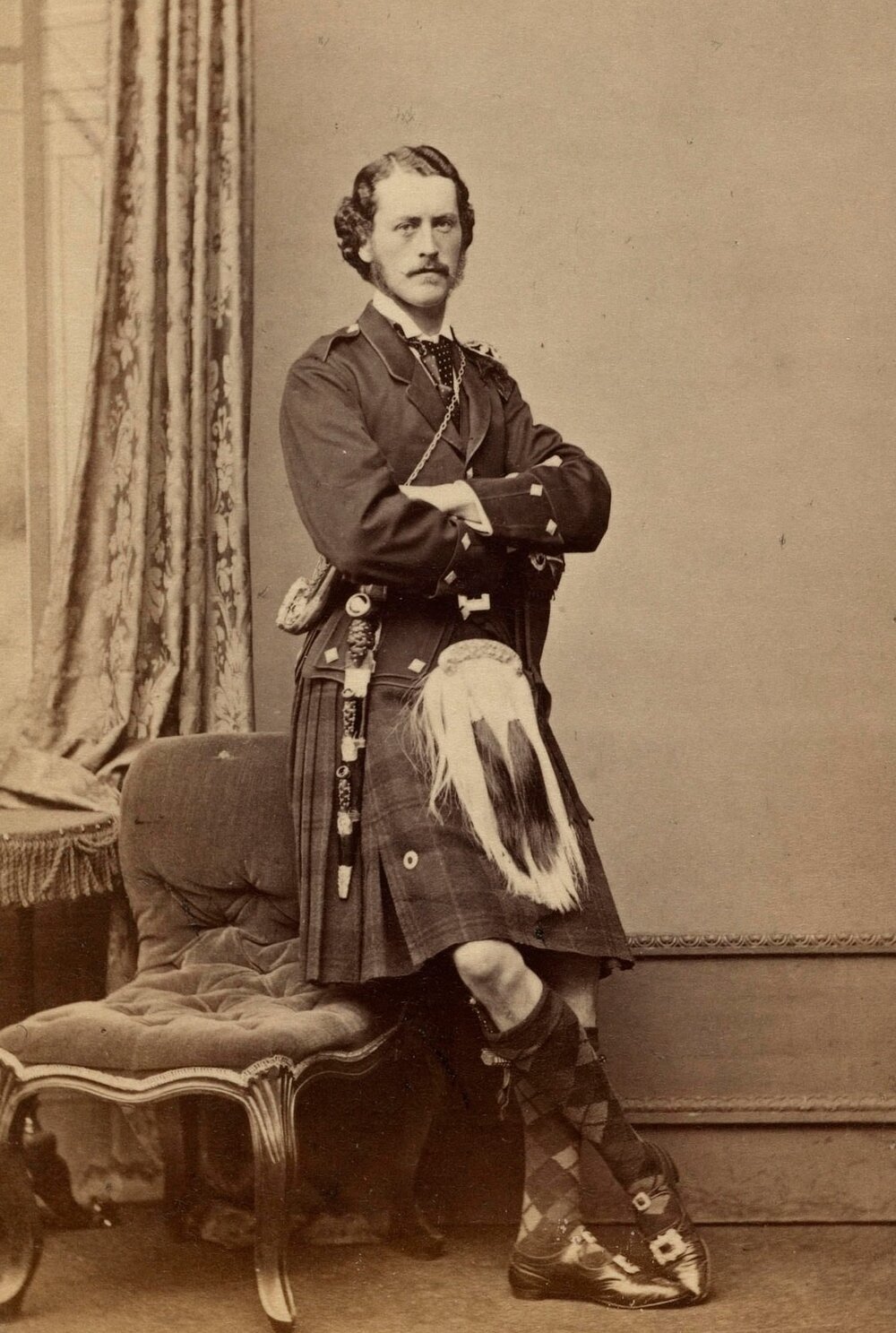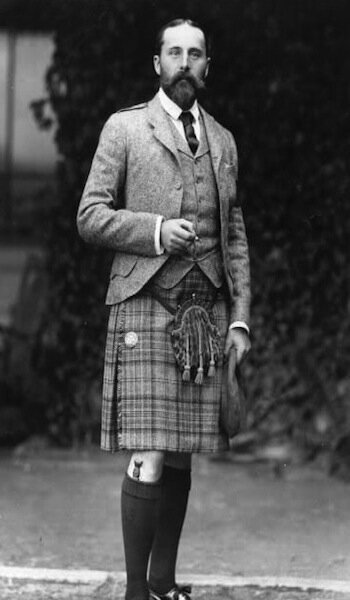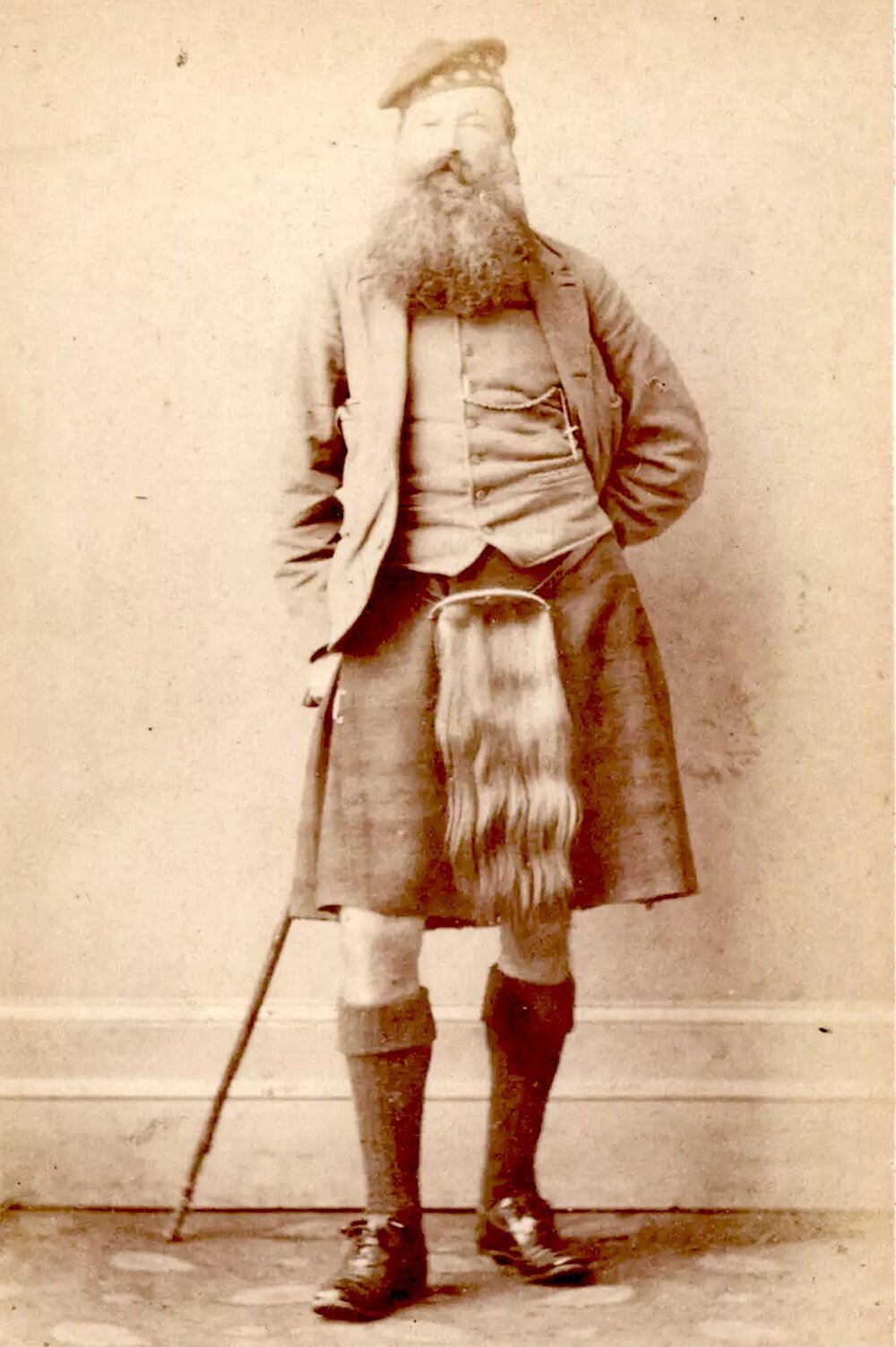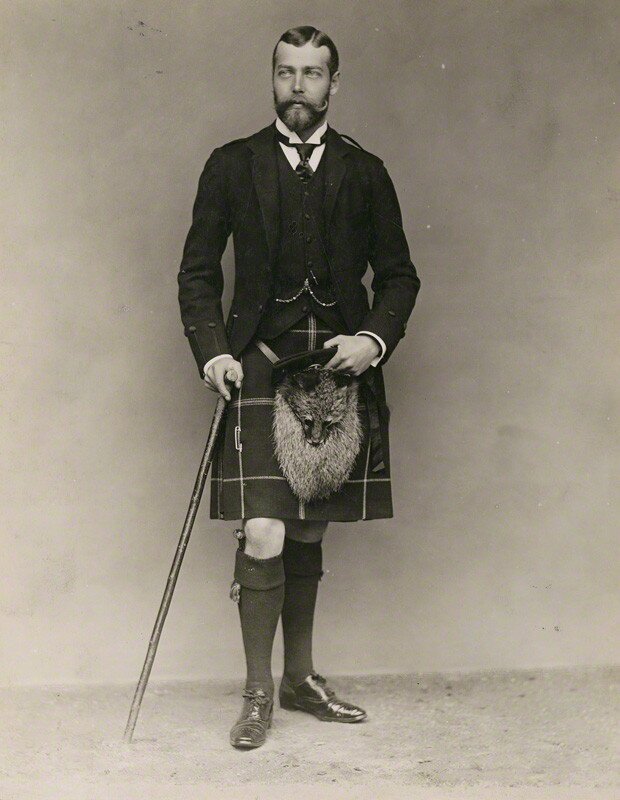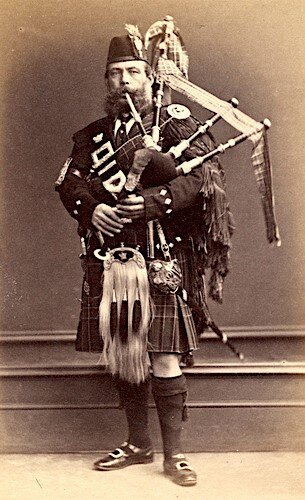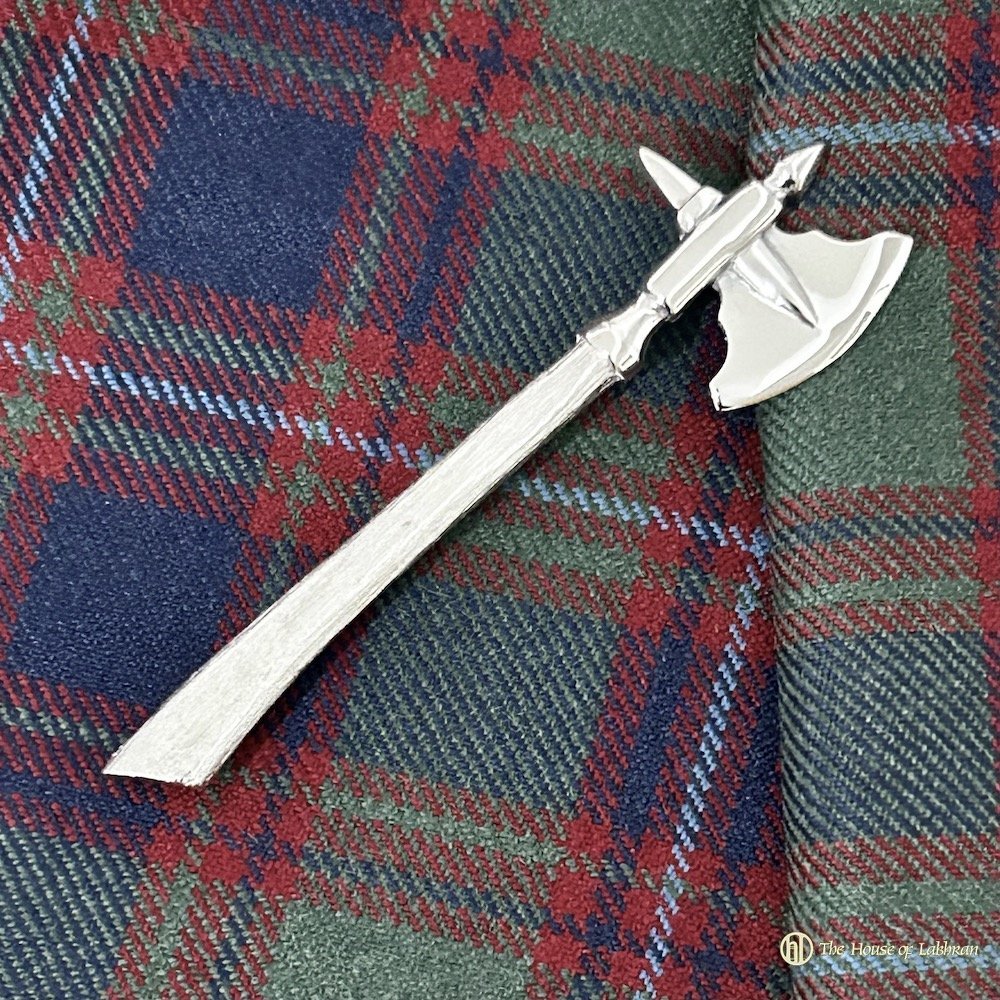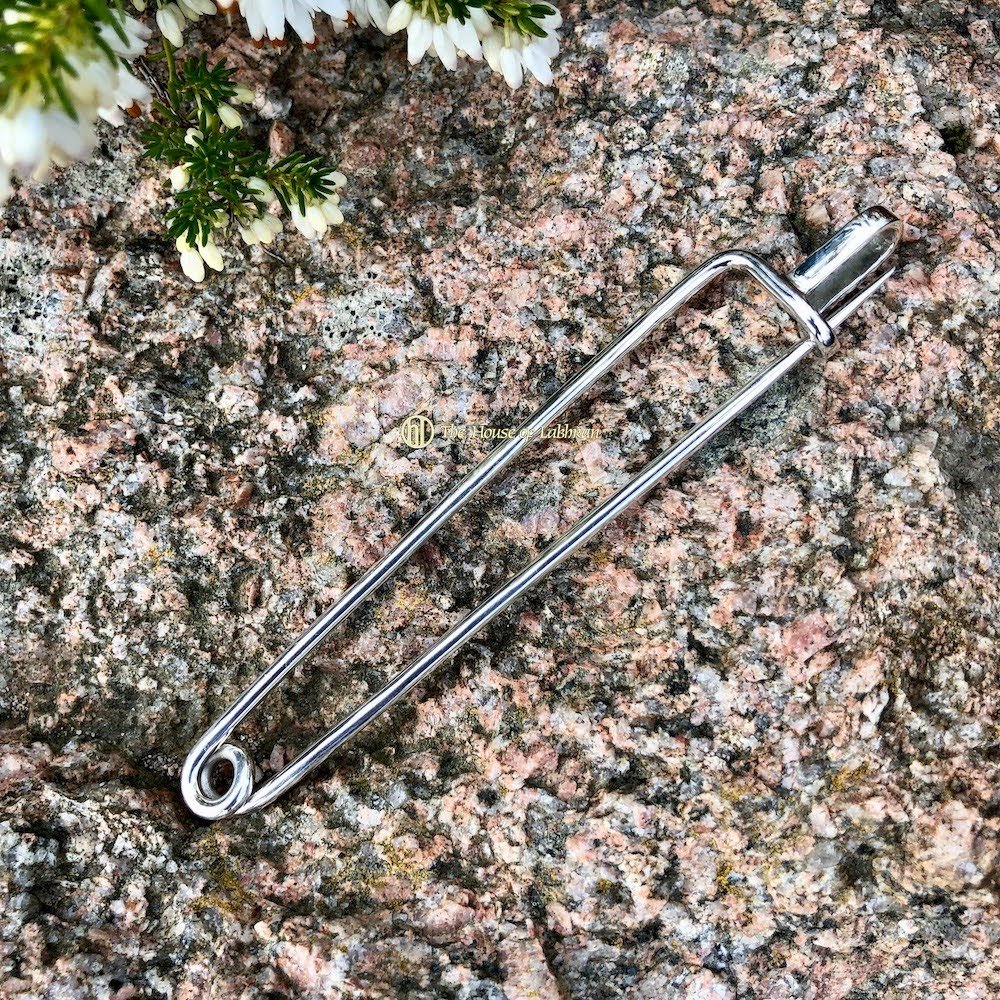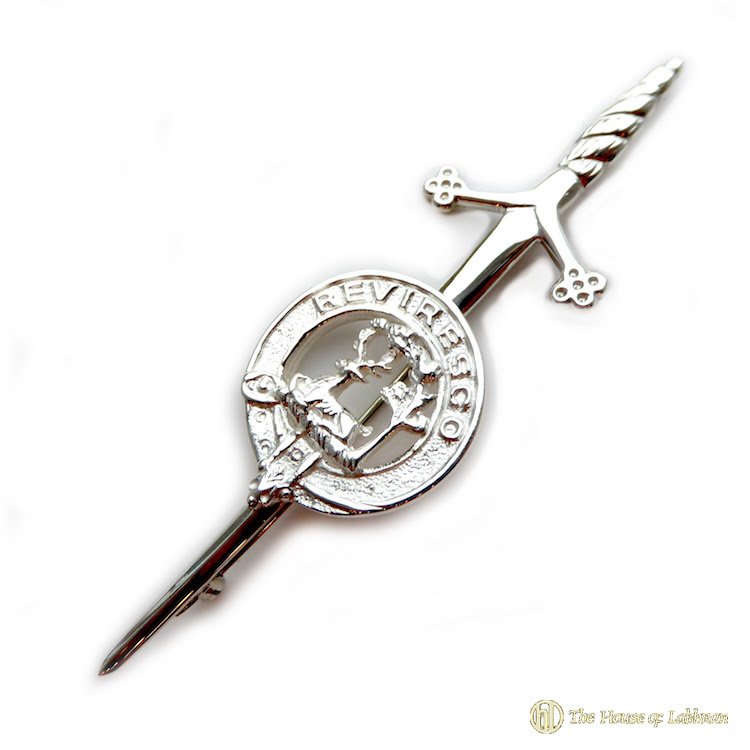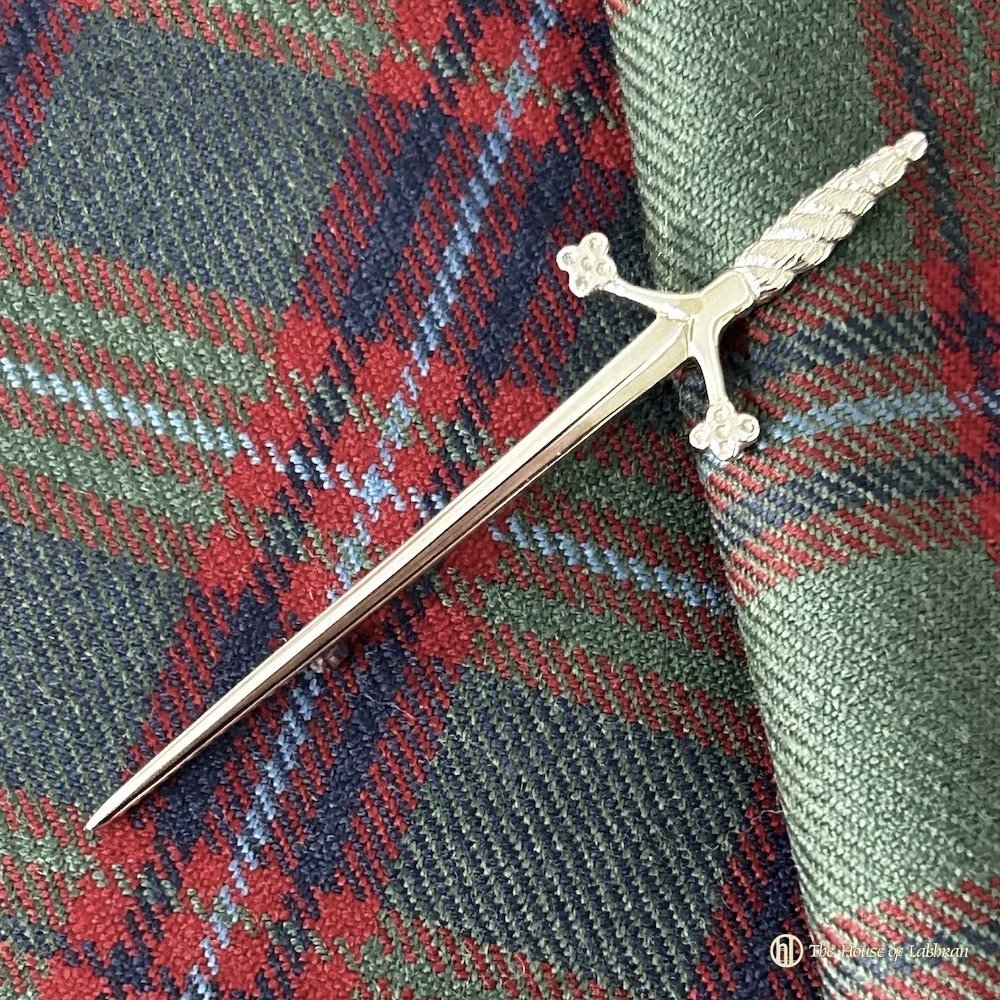A Short History of the Kilt Pin
Sterling silver kilt pins - © The House of Labhran - Scotland
The Kilt Pin - The birth of the kilt pin is somewhat disputed and has led to many stories. As the stories cannot be factually verified, it just adds further intrigue for all those looking into the history of the traditional Scottish kilt accessories.
Before the kilt pin appeared in the mid 19th century the kilt apron was often fastened or held down with a kilt bow or gaelic knot. According to Major Proctor of the Black Watch the Black Watch Royal Highlanders and the Argyll and Sutherland Highlanders are the only two highland regiments to wear rosettes on their kilts.
The Black Watch have been wearing kilt bow ribbons (gaelic knots ) on their kilts since the mid-18th century when the 'great kilt' (12 yards long, all in one garment, kilt and plaid) was worn. While the origins of the ribbons are rather hazy, it is believed that coloured ribbons were used by men when sleeping to tie the fabric together.
The Argyll & Sutherland Highlanders only started this tradition in the 19th century and only the officers and sergeants continued the tradition. The Scots Guards and RHF pipers later added kilt rosettes to their pipers kilts.
The kilt bow, gaelic knot or rosette became popular with civilian kilt wear in the nineteenth century and a number of early 19th century kilts show the kilt bows securing the kilt apron. Today we still make classic kilt bows and gaelic knots. Hand crafted in Scotland to traditional patterns.
Period Gaelic Knots - Kilt Bows & Kilt Rosettes
The Kilt Pin
Classic sterling silver bayonet Highlanders kilt pin - Today we offer a range of sterling silver kilt pins all hand crafted in Edinburgh hallmarked sterling silver. To see the current selection please visit the kilt pin shop page.
The truth maybe shrouded in Scottish mist. However, the custom of wearing a kilt pin came in during Queen Victoria's reign. The story goes that the Queen gave her own brooch to a soldier who was struggling with his kilt in windy conditions and showing too much of the wearer's anatomy than the Queen liked.
Author J. Charles Thompson writes that Queen Victoria brought in rules stating that all military kilts must have a fastening, and although the soldiers then wore kilt pins, they didn't fasten the layers of cloth with them as that would change the way the kilt hung. So the pin become worn on just the front outer apron. Over the years many different styles of pin have been worn on the front kilt apron, from classic simple kilt pins, to silver sword and dirk styles, round brooch styles and society kilt pins like that of the Piobaireachd Society Kilt Pin.
Today we offer a range of sterling silver kilt pins all hand crafted in Edinburgh hallmarked sterling silver. To see the current selection please visit the kilt pin shop page.
